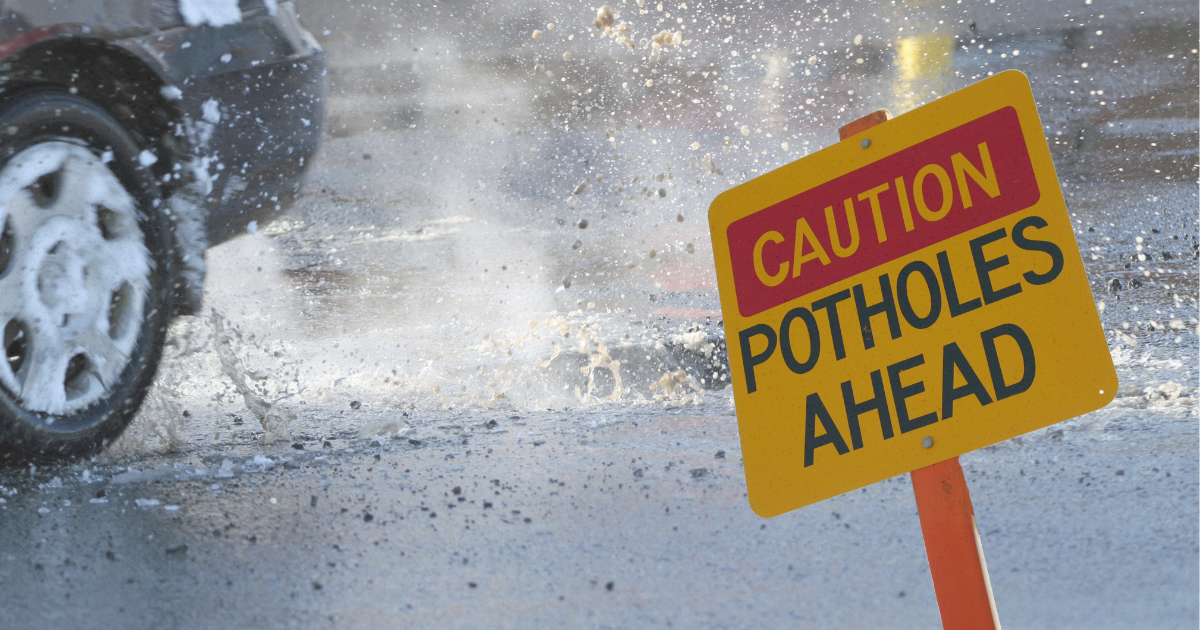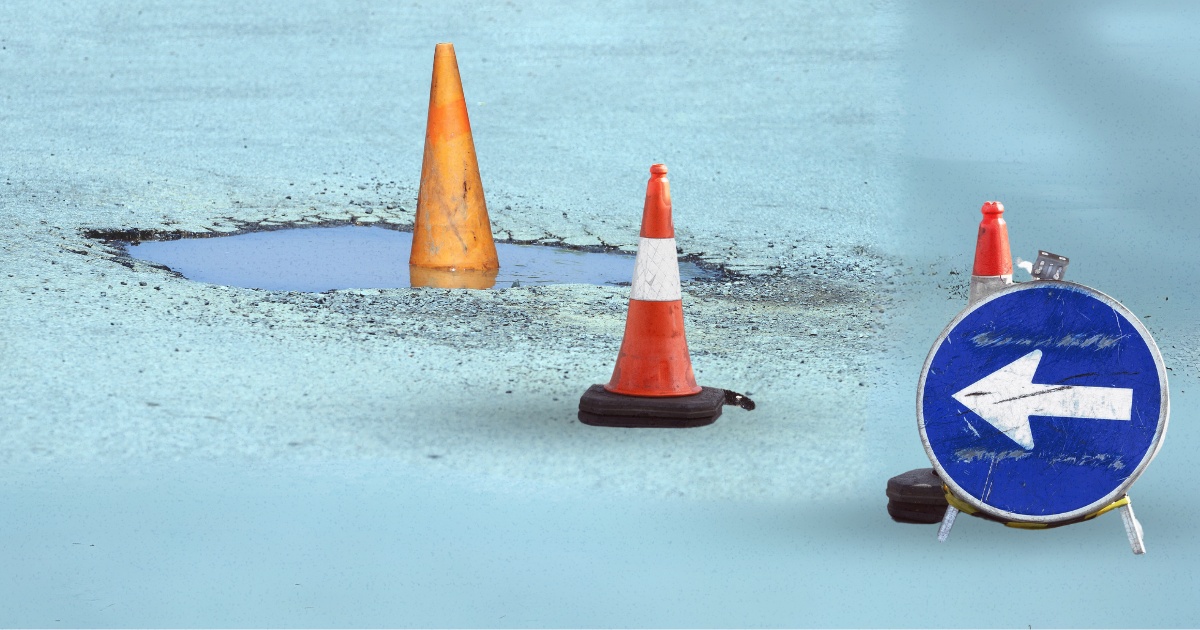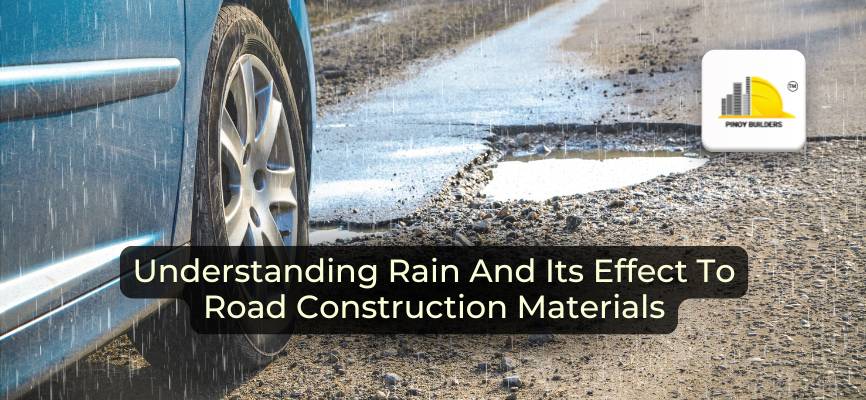You’ve probably noticed this too—every rainy season, drivers and commuters across the Philippines see a rise in potholes and damaged roads, leading to frustrating and sometimes even dangerous travel conditions. This issue keeps coming back, and it’s not just about poor construction; it’s also due to the wrong choice of road materials and, of course, unpredictable weather.
Building roads is a careful process that depends on durable materials meant to handle all sorts of environmental factors. But when the weather changes, it can seriously affect infrastructure, especially if the roads are made with low-quality materials. Understanding how rain and road materials interact is key to tackling the pothole problem during the rainy season. In this article, we’ll dive into how weather affects road infrastructure and explore what we can do to fix it.

Understanding Rain and Its Components
We learned early on that rain isn’t just plain water falling from the sky. Rainwater comes with a mix of chemicals and pollutants that can mess with road construction materials.Sometimes rainwater contains acids and other substances that can weaken or break down certain materials.
The quantity of rain also matters. Heavy downpours can cause immediate and serious damage, while lighter, more frequent showers might slowly wear things down over time. The more it rains, and the longer it lasts, the more likely roads are to get damaged. Roads that stay wet are more prone to the effects of water seeping in and breaking down materials.
Road Construction Materials and Their Properties
When building roads, a few key materials usually come into play: asphalt, concrete, and aggregates. Asphalt and concrete roads use aggregates as a key component, but they never mix concrete and asphalt.
1. Asphalt
Asphalt, often referred to as bitumen, is a sticky, black, and highly viscous liquid or semi-solid form of petroleum. This material is known for being flexible, which is why it’s so popular in road construction. It can handle a bit of stress without cracking, making it ideal for areas with lots of traffic.
Roads use this mixture to create a smooth, durable surface. However, when it absorbs too much water, it can become soft and start to deform, leading to those annoying bumps and dips in the road.
2. Concrete
Concrete is a different material altogether. Cement (typically Portland cement), water, and aggregates (such as sand and gravel) combine to form concrete. People prize concrete for its strength and durability, particularly in areas where roads must support heavy loads. But it’s not invincible—if water seeps into tiny pores and freezes, it can cause the concrete to crack as it expands.
3. Aggregates
Aggregates are a key component in both asphalt and concrete mixes. Aggregates and asphalt binder (bitumen) combine in asphalt pavement to form the final product. Aggregates, cement, and water combine to form concrete.
These are basically mixtures of crushed stone, gravel, and sand, and they help create a stable base for the road. The downside? Insufficient compacting or water management can cause them to shift and erode.
Each of these materials has strengths and weaknesses, especially when water is involved. Whether it’s softening asphalt, cracking concrete, or shifting aggregates, water can cause a lot of trouble if not properly managed.
The Impact of Rain on Road Construction Materials

Water is a road’s worst enemy. When rainwater gets into a road’s surface, it can weaken the underlying structure, leading to cracks and eventually, potholes.
Here’s how rain can mess with our roads:
- Weakening the Structure: Rainwater seeps into the surface and undermines the road’s foundation.
- Cracks and Potholes: Weakening the structure leads to the formation of cracks, which eventually develop into potholes.
- Poor Drainage: In areas with inadequate drainage, water buildup makes the problem worse by causing erosion and washout, especially on roads with shaky foundations.
- Freeze-Thaw Cycle: Although more common in temperate climates, this can still be an issue in the Philippines’ higher-altitude areas. Water that gets into cracks can freeze and expand when temperatures drop, making the damage even worse.
Real-world examples across the country show that roads built without taking these factors into account often fail, leading to costly repairs and dangerous driving conditions.
Facing the Issue: Pothole Mitigation Strategies
To combat the effects of rain on roads, several strategies can make a big difference:
- Advanced Materials: Using water-resistant asphalt and concrete mixtures can extend the lifespan of roads.
- Proper Drainage: Effective drainage systems are key to preventing water from pooling on road surfaces and seeping into the structure below.
- Regular Maintenance: Fixing minor cracks and potholes promptly can prevent more significant damage down the line.
- Public Awareness and Policies: It’s essential that government policies and public initiatives focus on building infrastructure that can handle the local climate, emphasizing quality materials and proper construction techniques.
Building Roads to Last Through All Seasons
The link between rain and road construction materials might seem tricky, but it’s not impossible to handle. By figuring out how water impacts different materials and using strategies to tackle these issues, we can build roads that last longer and keep everyone safer. As the rainy season tests our infrastructure, it’s crucial for local governments and construction companies to focus on creating rain-resistant roads to cut down on damage and boost safety for all road users.
References
Bituchem. (n.d.). How Does The Weather Affect Highways And Roads? | BituChem. Bituchem. Retrieved August 21, 2024, from https://www.bituchem.com/knowledge-hub/how-does-the-weather-affect-roads/
Nelson, P. (2017, March 9). How Does Rain Create More Potholes? KQED. Retrieved August 21, 2024, from https://www.kqed.org/news/11350519/how-does-rain-create-more-potholes
Rua Seguridad. (2023, January 4). How Does the Weather Affect Roads? Rua Seguridad. Retrieved August 21, 2024, from https://www.ruacorp.com/how-weather-affects-roads/
Segaert, A. (2022, October 14). How do potholes form? Does rain make potholes worse? The Sydney Morning Herald. Retrieved August 21, 2024, from https://www.smh.com.au/national/why-are-potholes-like-creme-brulee-and-why-does-rain-make-them-worse-20221013-p5bpj3.html










